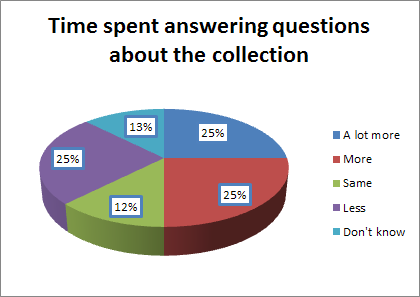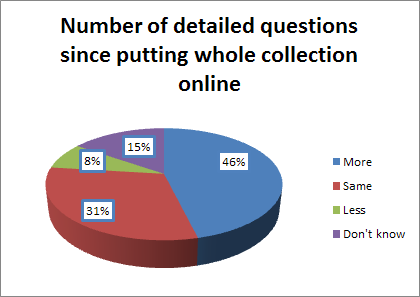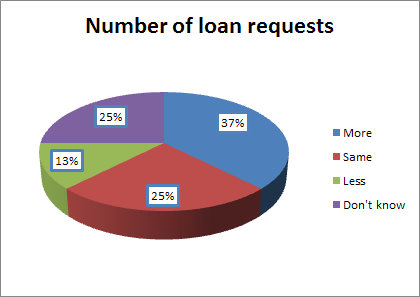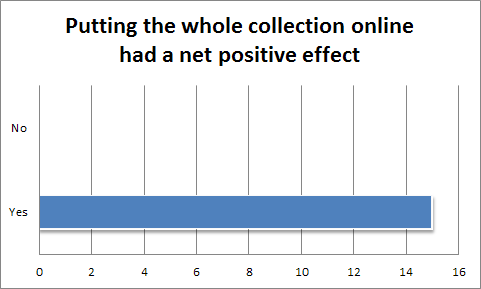In May this year I spoke at the annual Museums Australia conference about “How to cope when you open your digital doors“. A longer version of the talk will be part of the post-conference journal, due out early next year.
As research for the talk I sent out an online questionnaire and had follow-up discussions during with fifteen art and heritage organisations that had made the commitment to share the bulk of their collection records online.
The breakdown of the participants was as follows: eight museums, six galleries and one university; eight social history collections, six art collections and three natural science collections; five New Zealand organisations, five Australian organisations, two US organisations and three UK organisations; three small organisations (1-5 full-time equivalent employees), five medium-sized organisations (6-30 full-time equivalent employees) and seven large organisations (greater than 31 full-time equivalent employees). Two of the organisations managed multiple collections types.
Here’s a quick recap of some of the survey results:

Half of the respondents found they now spent more time answering questions from the public about the collection. That’s not surprising – more content + more people discovering the content = more questions. Most of the organisations were not able to get additional resources to deal with the increased workload, but the increased discussion with their audience was positive and helped them meet goals around education and sharing.

The type of questions was also changing. Online visitors were, in some cases, able to answer questions themselves, but this lead to more complex questions. One small organisation logged all queries which took longer than 15 minutes to answer. These questions went from 250 per year to 400 per year after the collection was put online.

Putting the collection online also increased demand in other areas. More than 1/3 of the respondents had an increase in the number of loan requests.

Every one of the organisations felt that the net effect was positive. The benefits they gained from putting the whole collection online outweighed concerns around poor quality data or increased workloads. All of the respondents had examples of powerful, personal connections that had formed between their organisation and individuals that discovered items from their online collection.